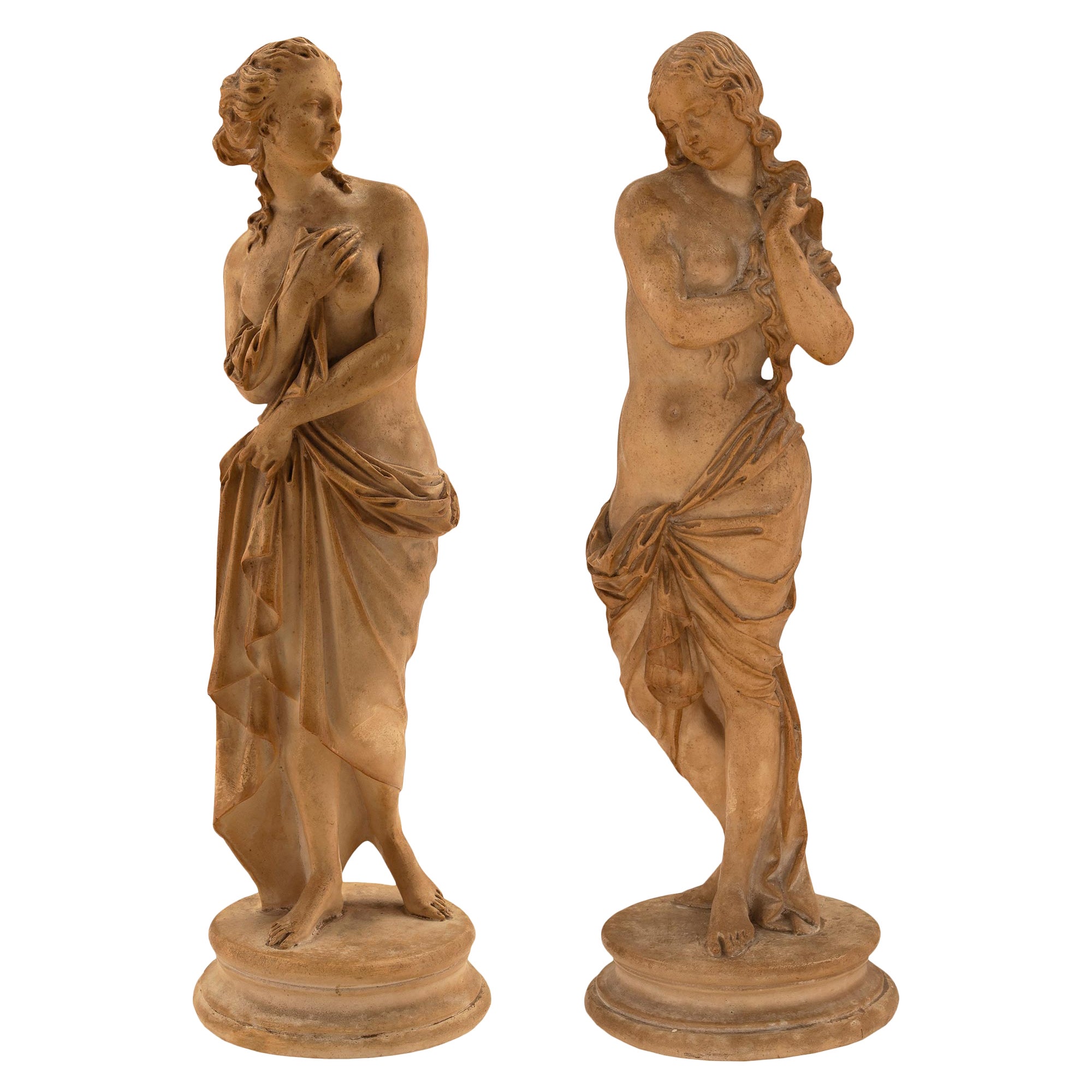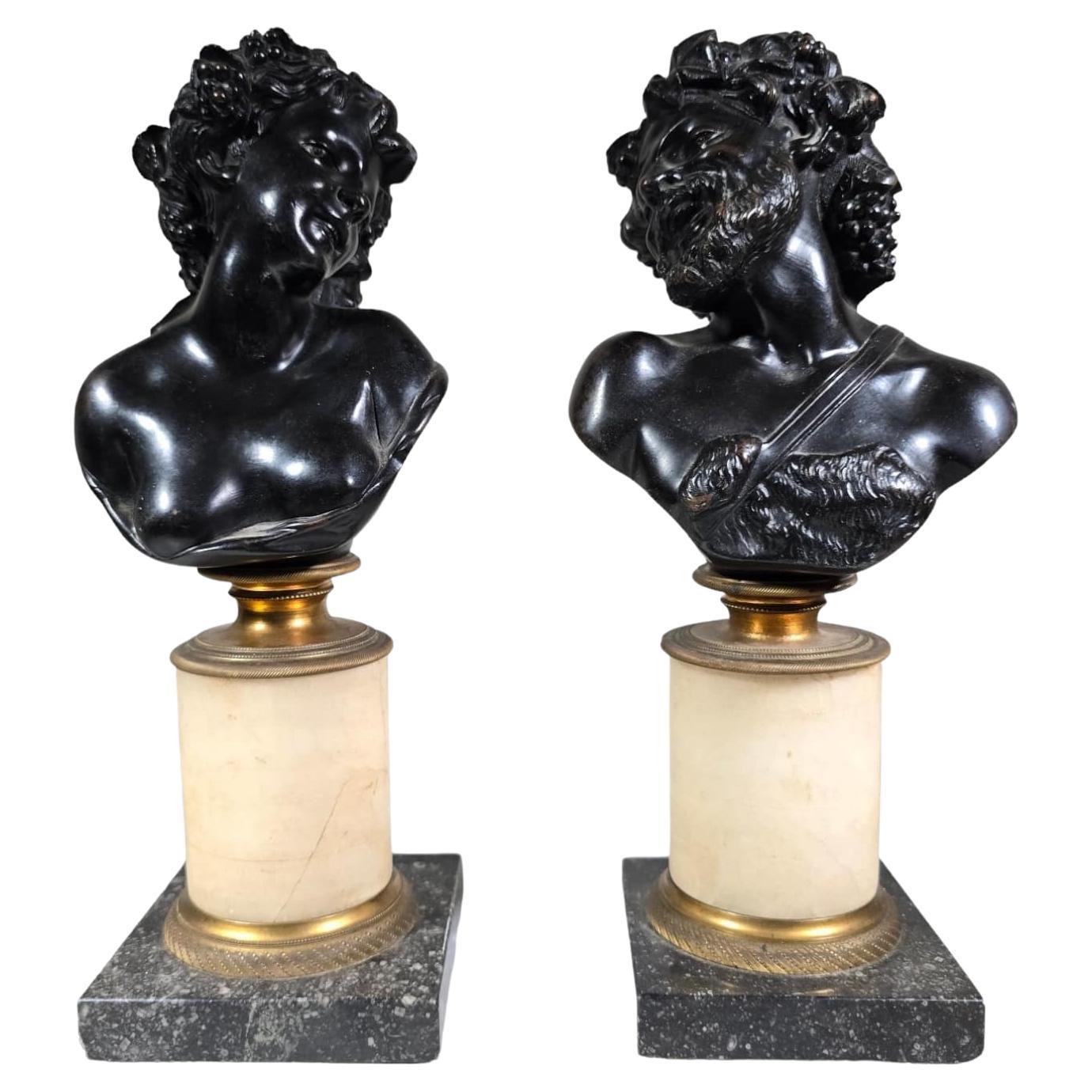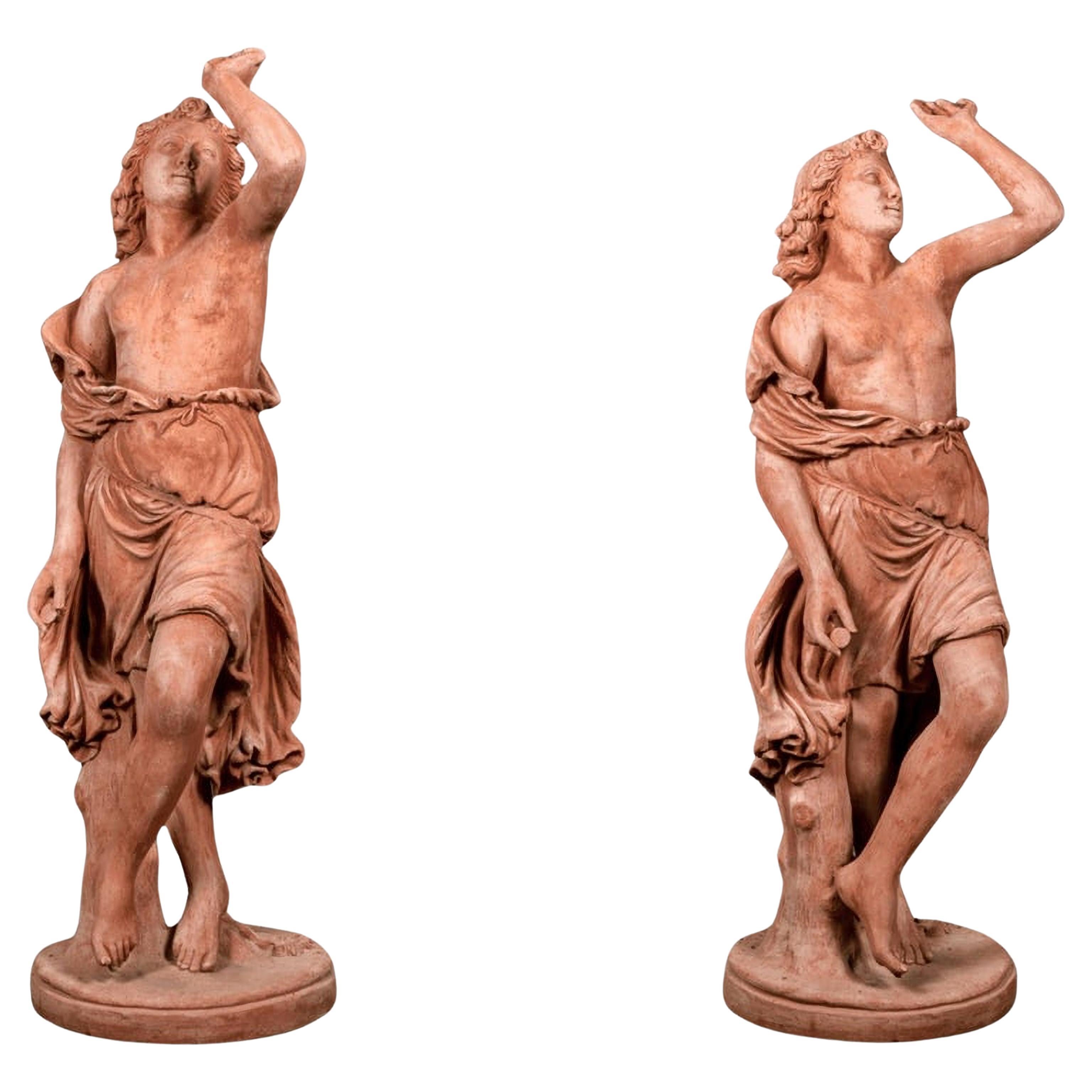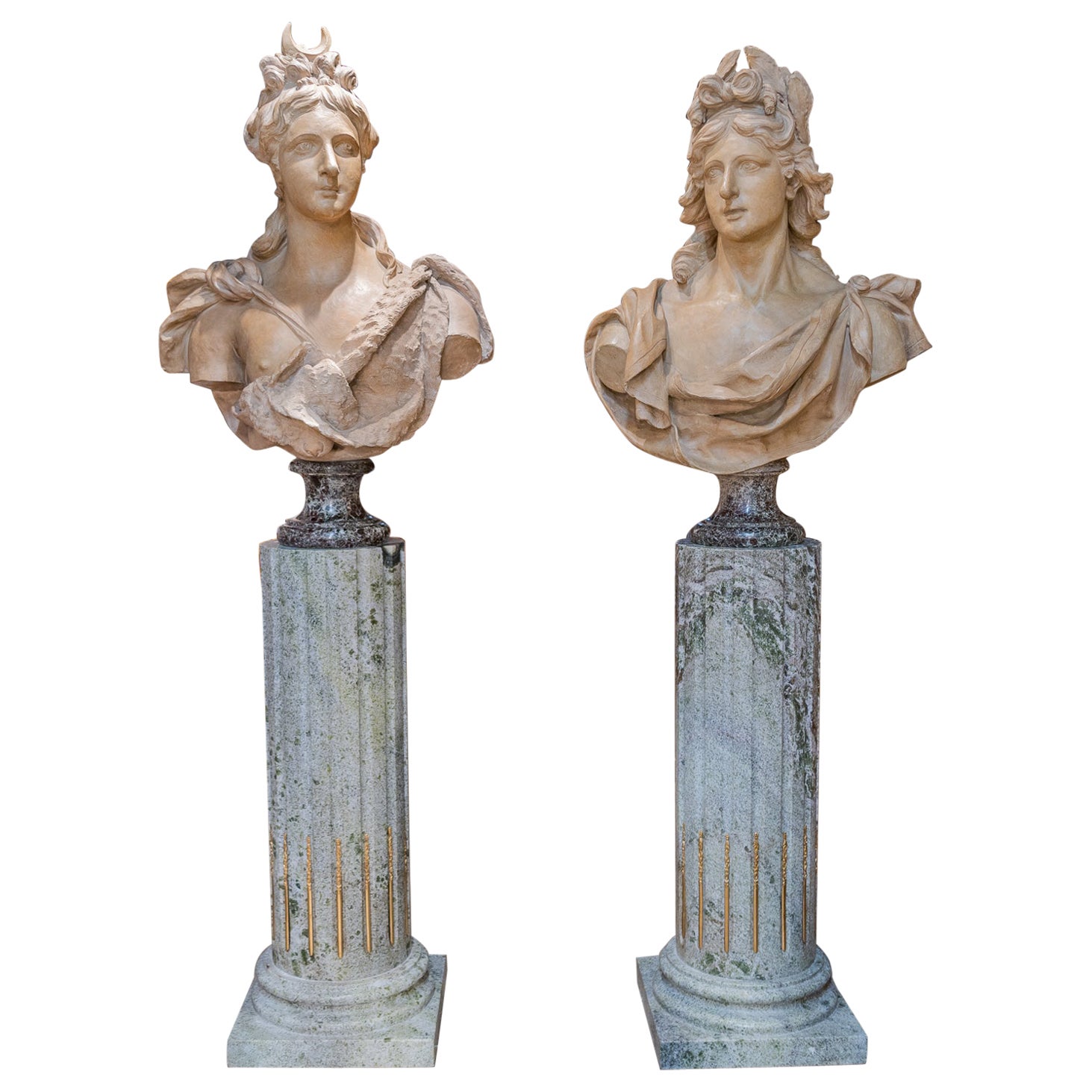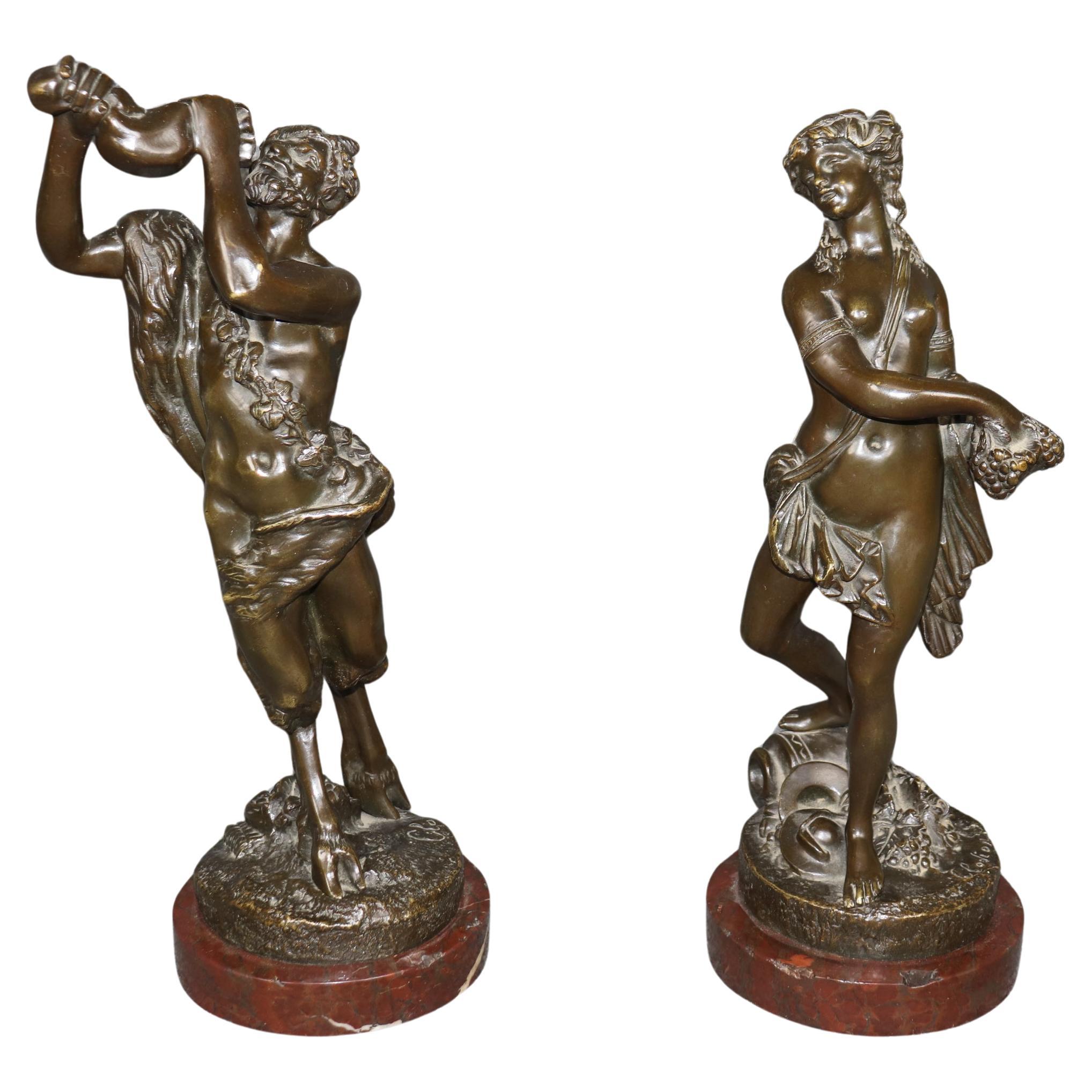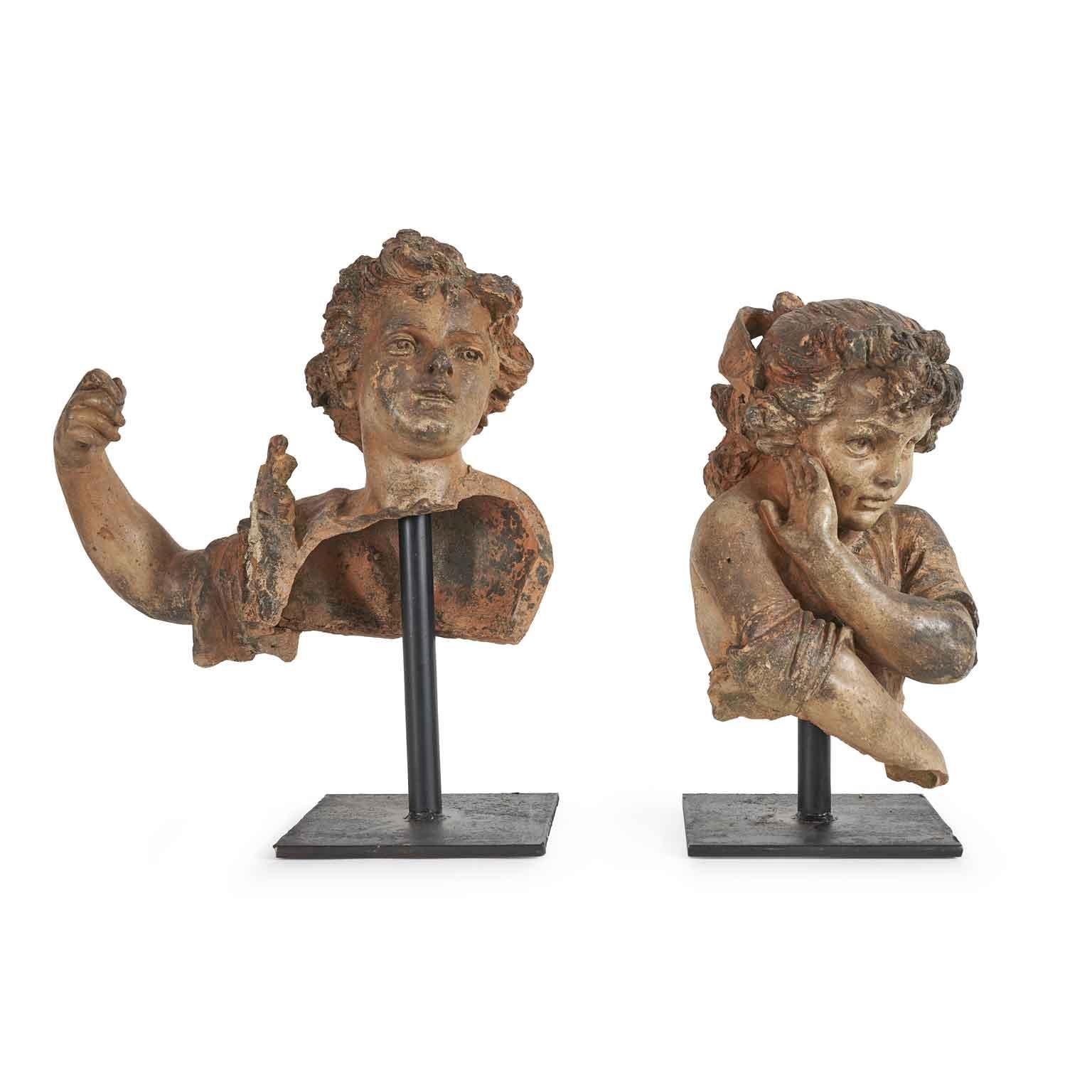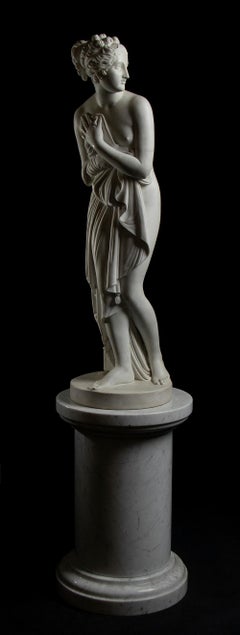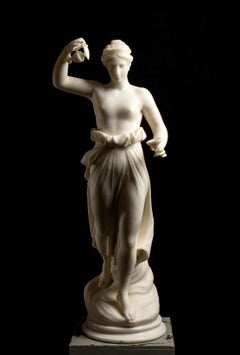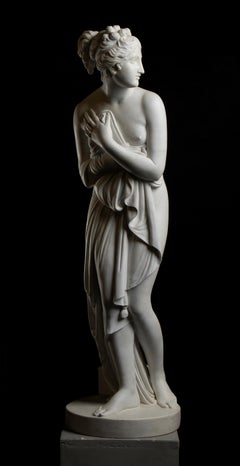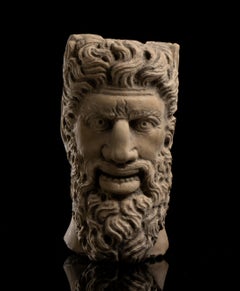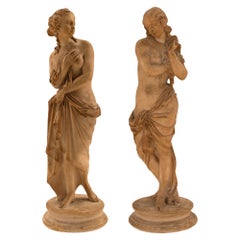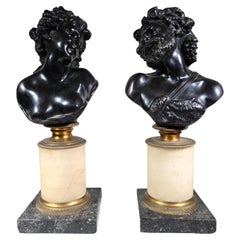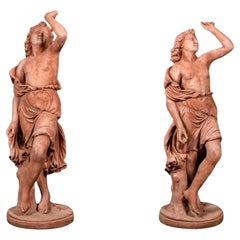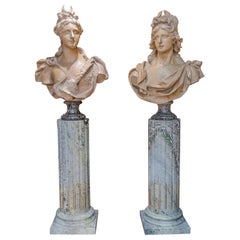Items Similar to Terracotta Pair of Busts Portrayed Ariadne and a Satyr Signed Lanzirotti 19th
Want more images or videos?
Request additional images or videos from the seller
1 of 20
Antonio Giovanni LanzirottiTerracotta Pair of Busts Portrayed Ariadne and a Satyr Signed Lanzirotti 19thafter 1850
after 1850
$10,274.15
$14,677.3630% Off
£7,578.77
£10,826.8130% Off
€8,582
€12,26030% Off
CA$14,235.35
CA$20,336.2230% Off
A$15,447.53
A$22,067.9030% Off
CHF 8,185.83
CHF 11,694.0430% Off
MX$189,456.41
MX$270,652.0130% Off
NOK 101,299.04
NOK 144,712.9130% Off
SEK 95,722.23
SEK 136,746.0430% Off
DKK 65,350.29
DKK 93,357.5630% Off
About the Item
The artist portrayed Ariadne and a satyr as busts in an ideal scene and there seems to be a relationship of complicity and trust which is also evident from the facial expressions.
The artist, Antonio Giovanni Lanzirotti (Napoli, 9 maggio 1830 – 1921) was an Italian sculptor; he studied in Palermo,then then travels to Paris, to work under Joseph Michel Ange Pollet. His first work was The Education of Bacchus, exhibited at the 1855 World Exposition at Paris. In 1863 he went to Turin, where King Vittorio Emanuele II commissioned statues of the Conte Verde and Duke Vittorio Amedeo I. He sends to Paris, a statue La pensieroso, another La schiava, the first found in London, and the second sold to the museum of Nice.
In 1860 he joined the movement of Garibaldi, and was made prisoner at Capo Corso, he was imprisoned for two months at Gaeta, then returned to Paris. There he completed: Amore punito; La Danza; the Mausoleum of Count Tyzhieviez, and a bather which he exhibited at the Salon. Scolpi also sculpted Il Piacere; and La Follia. He also completed many busts and portraits, including those of Cassagnac, of M. Girardin, of Doctor Armand Trousseau, of the writer Pierre Beaumarchais, of the King Umberto I. Lanzirotti was named to many Academies, and was awarded the Cross of Knights of Saints Maurizio and Lazzaro, inducted into the Order of the Crown of Italy, and awarded the Order of Isabel the Catholic
- Creator:Antonio Giovanni Lanzirotti (1830 - 1921, Italian)
- Creation Year:after 1850
- Dimensions:Height: 9.85 in (25 cm)Width: 7.09 in (18 cm)Depth: 4.73 in (12 cm)
- Medium:
- Period:
- Condition:
- Gallery Location:Roma, IT
- Reference Number:1stDibs: LU1350115651222
About the Seller
4.9
Vetted Professional Seller
Every seller passes strict standards for authenticity and reliability
Established in 1998
1stDibs seller since 2020
97 sales on 1stDibs
Typical response time: 2 hours
- ShippingRetrieving quote...Shipping from: Roma, Italy
- Return Policy
Authenticity Guarantee
In the unlikely event there’s an issue with an item’s authenticity, contact us within 1 year for a full refund. DetailsMoney-Back Guarantee
If your item is not as described, is damaged in transit, or does not arrive, contact us within 7 days for a full refund. Details24-Hour Cancellation
You have a 24-hour grace period in which to reconsider your purchase, with no questions asked.Vetted Professional Sellers
Our world-class sellers must adhere to strict standards for service and quality, maintaining the integrity of our listings.Price-Match Guarantee
If you find that a seller listed the same item for a lower price elsewhere, we’ll match it.Trusted Global Delivery
Our best-in-class carrier network provides specialized shipping options worldwide, including custom delivery.More From This Seller
View AllAntonio Canova (After) Marble Sculpture Of Venus Italica On Marble Base
By Antonio Canova
Located in Roma, IT
a superb scale size of the Venere italica, the famous and notable sculpture carved by Antonio Canova in the 19th century standing on circular Carrara marble base.
At the top of his ...
Category
19th Century Other Art Style Figurative Sculptures
Materials
Marble
Antonio Canova Ebe Aprés Ebe White Marble Sculpture 19th Century Italian
By Antonio Canova
Located in Roma, IT
An important grand tour Antonio Canova Ebe (Aprés), carved in white marble by an Italian sculptor artist in the 19th century from a block of white marble.
The work depicts the go...
Category
19th Century Other Art Style Figurative Sculptures
Materials
Marble
$29,330 Sale Price
30% Off
Antonio Canova (After) Marble Sculpture Of Venus Italica Uffizi Museum 19th
By Antonio Canova
Located in Roma, IT
a superb scale size of the Venere italica, the famous and notable sculpture carved by Antonio Canova in the 19th century. At the top of his notability and influence the King Ludovico...
Category
19th Century Other Art Style Figurative Sculptures
Materials
Marble
Sculpture Figurative White Marble Portrait of a Sylenus Classical Greek 19th
Located in Roma, IT
A portrait of a Silenus, ( also know as satyr) carved in white marble probably in central Italy in the 19th Century.
The head despite a man with long hears in equine style with also ...
Category
19th Century Other Art Style Figurative Sculptures
Materials
Marble
Roman Red Marble Sculpture Portrait Empress Julia Domna 19th Century
Located in Roma, IT
Marble sculpture depicting a detailed portrait of the Roman Empress Julia Domna, sculpted by a master Roman sculptor in red marble and mounted on a square white marble base with a ce...
Category
19th Century Other Art Style Figurative Sculptures
Materials
Marble
$23,943
Free Shipping
A large Italian Carved Africano And Giallo Antico Marble Tazza Roman Ambit 18th
Located in Roma, IT
African marble stand resting on a pedestal in antique yellow marble. The elliptical basin model decorated with radial grooves from the center outwards and with pods on the upper edge...
Category
18th Century Figurative Sculptures
Materials
Marble
$16,760 Sale Price
30% Off
Free Shipping
You May Also Like
Pair of Italian 18th Century Terra Cotta Statues
Located in West Palm Beach, FL
An exceptional and most charming true pair of Italian 18th century terra cotta statues. Each statue is raised by a mottled circular base where the elegant and wonderfully executed ma...
Category
Antique 18th Century Italian Figurative Sculptures
Materials
Terracotta
$14,100 / set
Antique Pair of Italian Bronze Busts: Dionysus and Ariadne, 19th Century
Located in Madrid, ES
This exquisite pair of antique Italian bronze busts represents the timeless allure of the Grand Tour era, featuring depictions of Dionysus and Ariadn...
Category
Antique 1880s Figurative Sculptures
Materials
Bronze
Pair of Statue " The Wealth" in Terracotta Impruneta 20th Century H: 128cm
Located in Madrid, ES
Pair of Statue " The Wealth" in Terracotta Impruneta 20th Century
Height (Cm)
128
Base Dimensions (Cm)
Ø40
Weight (Kg)
50
very good condition
Category
Early 20th Century Italian Modern Animal Sculptures
Materials
Terracotta
Magnificent Pair of Late 18th C Large Terra Cotta Busts of Apollo and Diana
Located in Dallas, TX
A large monumental pair of late 18th century Italian terra cotta busts of Apollo and Diana on jadeite and gilt bronze mounted pedestals. 77'' H overal...
Category
Antique Late 18th Century Italian Classical Greek Busts
Materials
Terracotta
Pair French Bronze Sculptures of Satyr & Lady Rouge Marble Bases After Clodion
By Claude Michel Clodion
Located in Swedesboro, NJ
This exquisite pair of French bronze sculptures depicts a Satyr and a Lady, both finely cast in the style of Clodion (Claude Michel, 1738–1814), one of the most celebrated Rococo scu...
Category
Antique 1890s French Neoclassical Revival Figurative Sculptures
Materials
Griotte Marble, Bronze
Pair Of Terracotta Children Italian Romantic Busts Late 1800s
Located in Milano, IT
Pair of Fragments Of Late 1800s Romantic Sculptures, Pair of Terracotta Busts of Children probably part of a fountain, of a larger sculptural group. These are busts of a child with ...
Category
Late 19th Century Romantic Figurative Sculptures
Materials
Terracotta
More Ways To Browse
Antique Catholic
Antique Satyr
Antique Doctors
19th Century Terracotta Bust
Satyr Sculpture
Antique Capo
Antique Amore
Sculpture Ariadne
Rennert Inner Dialogue
Resin Gummy Bear
Ricardo Mesa
Richard Macdonald Orpheus
Richard Macdonald Red Dress
Richard Macdonald Trumpeter Draped
Richard Orpheo
Riho Kuld
Rodin Man With Broken Nose
Rolling Ball Sculpture
